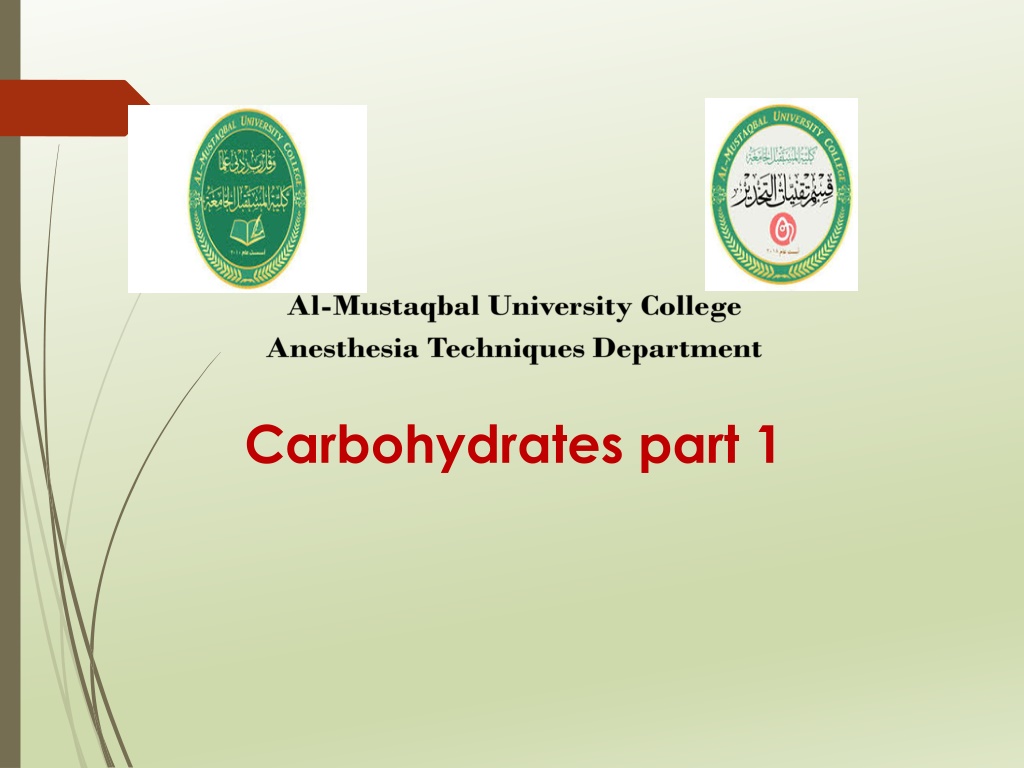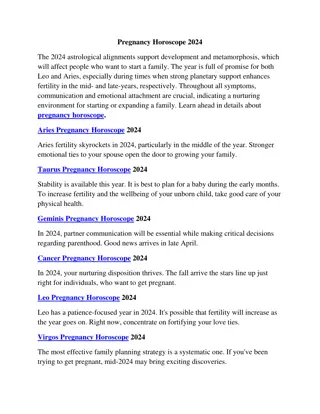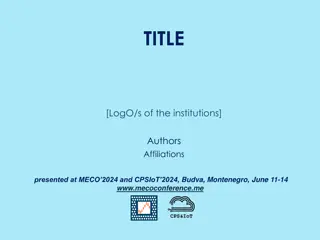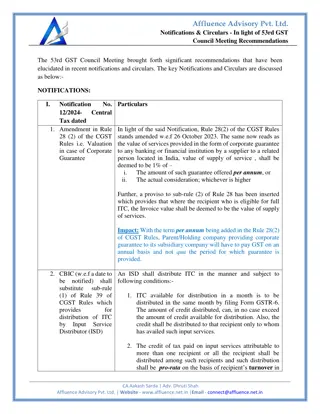
Understanding Carbohydrates: Functions, Classification, and Importance
Explore the world of carbohydrates, their definition, functions, classification based on sugar units, and key compounds like glucose and glycogen. Learn about the vital role carbohydrates play in providing energy, storing energy, and serving as structural components in living beings.
Download Presentation

Please find below an Image/Link to download the presentation.
The content on the website is provided AS IS for your information and personal use only. It may not be sold, licensed, or shared on other websites without obtaining consent from the author. Download presentation by click this link. If you encounter any issues during the download, it is possible that the publisher has removed the file from their server.
E N D
Presentation Transcript
Carbohydrates Definition:- Carbohydrates may be defined as organic compounds occurring in foods and living tissues and including sugars, starch, and cellulose, composed of the elements C, H, and O. Carbohydrates are A major source of energy from our diet. Also called saccharides, which means sugars.
The importance Of carbohydrates Functions of Carbohydrates: 1 - Source of energy for living beings, e.g. glucose 2 - Storage form of energy, e.g. glycogen 3 - Serve as structural component, e.g. glycosaminoglycans in humans 4 - Non-digestable carbohydrates like cellulose, serve as dietary fibers 5 - Constituent of nucleic acids RNA and DNA, e.g. ribose and deoxyribose sugar 6 - Play a role in immunity and also involved in detoxification, e.g. glucuronic acid
Classification of Carbohydrates Classification: According to no. of sugar units Monosaccharaides: 1 sugar unit : glucose, fructose which present mainly in fruits, galactose Disaccharides: 2 sugar units: lactose which known as sugar milk (galactose + glucose), maltose(glucose + glucose) Oligosaccharides: 3-9 units Polysaccharides: 10 or more units The suffix ose indicates that a molecule is a carbohydrate
GLUCOSE Physiologically and biomedically , glucose is the most important monosaccharide It is called blood sugar C6H12O6 It is source of energy It is can be stored in our body in form of glycogen
GLYCOGEN METABOLISM Glycogen is the major storage form of glucose mainly in the liver and muscle. The concentration of liver glycogen (up to 6%) is greater than in muscle tissues (1%). The synthesis( glycogenesis ) and degradation( glycogenolysis ) occur via different pathways. Glycogenesis and glycogenolysis are both cytosolic processes
Glycogenesis Glycogenesis Glycogenesis is the pathway for the formation of glycogen from glucose. This process requires energy, supplied by ATP and uridine triphosphate (UTP). It occurs in muscle and liver.
Glycogenolysis Glycogenolysis is the degradation of glycogen to glucose-6- phosphate and glucose in muscle and liver respectively. Glycogenolysis is not the reverse of glycogenesis but is a separate pathway.
Significance of Glycogenolysis and Glycogenesis In liver Following a meal, excess glucose is removed from the portal circulation and stored as glycogen by glycogenesis. Conversely, during fasting, blood glucose levels are maintained within the normal range by release of glucose from liver glycogen by glycogenolysis. In muscle The function of muscle glycogen is to act as a readily available source of glucose within the muscle itself during muscle contraction. The muscle cannot release glucose into the blood, because of the absence of glucose-6-phosphatase that hydrolyzes glucose 6-phosphate to glucose. Therefore, muscle glycogen stores are used exclusively by muscle.






















